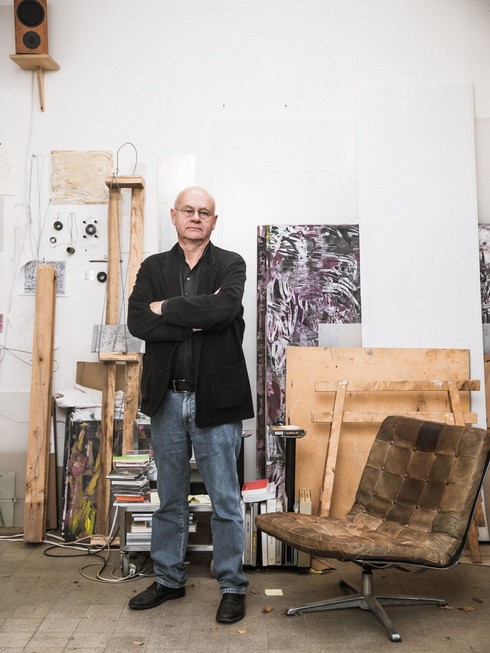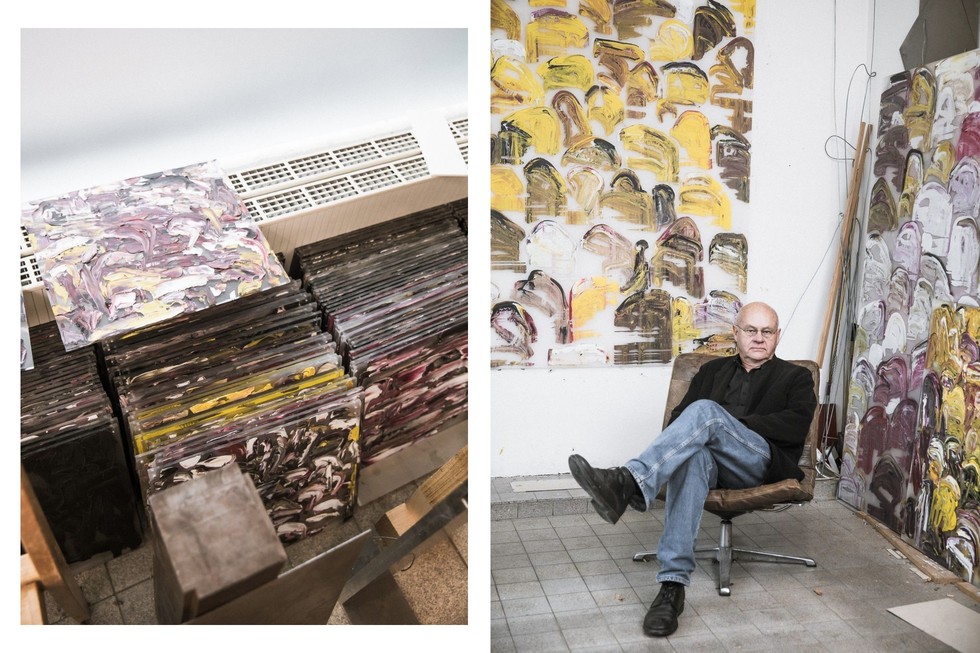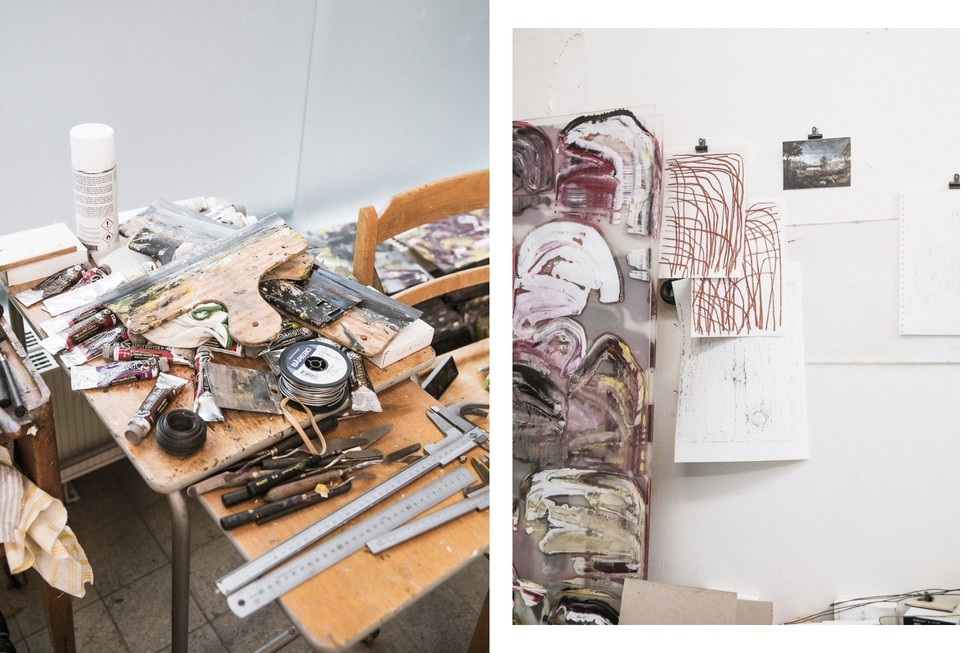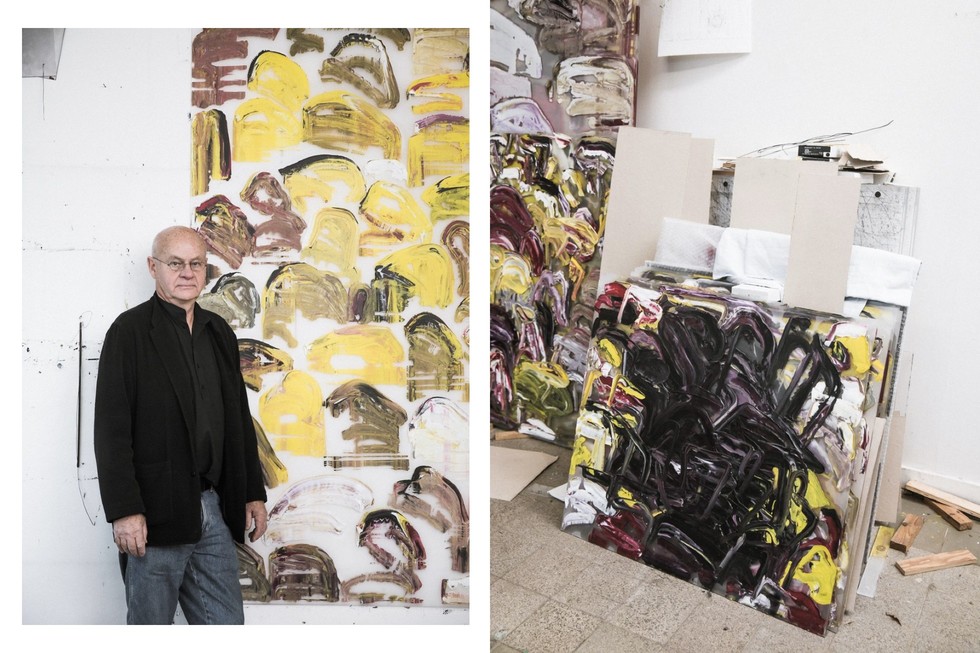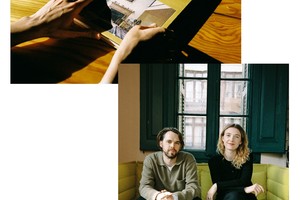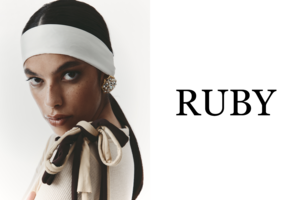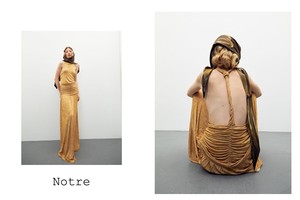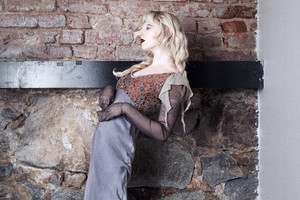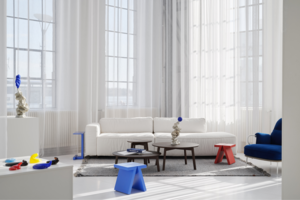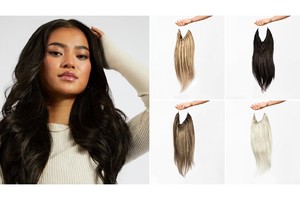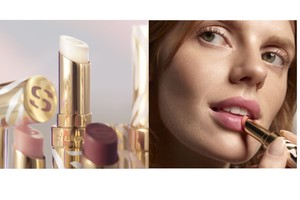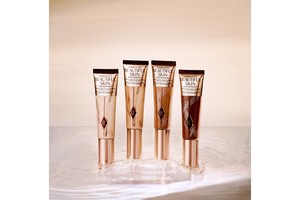An Interview With Håkan Rehnberg
Written by Emelie Bodén & Filippa Finn by Emelie BodénHåkan Rehnberg is one of Sweden’s most distinguished contemporary artists. For several decades his artistic practice has combined a formal precision with a fundamental interest in the inherent character and possibilities of his materials. The artist describes each individual work as an attempt not to seek answers to but instead to deal with an impossible situation. The sculptures focus on the language-less-ness that he believes is fundamental in his work in which the relationship between the form and the material takes on a new character that is not burdened by language constructions and predetermined rules.
What sets this exhibition apart from your previous body of work? Can you elaborate on the new direction it represents?
This exhibition features a large group of new sculptures, a departure from my previous focus on painting and a single sculpture. In this exhibition, I showcase a significant collection of new sculptures, some of which have become pivotal works, symbolizing various stages in my artistic journey. The most significant piece is called “derovink,” a German term meaning a blink, closely associated with a gesture. I do not make statements or assert anything in my art; it's purely a gesture. The sculpture itself is an upright aluminum slab with a slight deviation from the vertical, held in place by thin wires. This deviation holds great significance in the exhibition and has historical connections to other sculptures by artists like Barnet Newman, Giacometti, and Greek figurines, albeit with a unique twist.
Another work in the exhibition, “Talapparaten,” is related to a stutter I suffered from for many years. However, it has evolved into a different perspective on language than the norm. I often talk about wanting but not being able to, and being able but not wanting to. I work under these dual premises, which can be rather negative in many ways. However, my focus is on highlighting expressions rather than the language itself. My works are never linguistic in that sense but rather a critique of language.
Language presents a problem for me. I dislike the idea of artworks representing something; they should be themselves. I'm against representation and prefer to discuss gestures over depictions. I'm not fond of symbols either, as they represent and are tied to meanings. I believe that art does not carry meaning; it has a deeper impact on the viewer, striking them in a way that leaves an impression without complete understanding. It lingers and affects individuals in various ways.
Why do you exclusively choose to work with oil on blasted acrylic glass for your paintings? Was this a deliberate choice, or did it evolve organically over time?
Thirty years ago, I began working with sandblasted acrylic glass. Before that, I worked with heavier iron objects, lead plates, and such. I was searching for a canvas that wasn't burdened with historical connotations. That's when I came across this sandblasted acrylic glass, which has an entirely smooth surface and excellent paint adhesion. I have always preferred oil paint because you can work with it for quite some time before it dries. What distinguishes my painting, and has done so since I started using these materials, is that I always complete a painting in a single session. I never go back and make changes; it must be executed in one sitting. This session can last from a few hours to a full day.
What inspired the title of your new exhibition, “By an Oak and a Rock”? Could you share the origin or significance of this name?
The expression “by an oak and by a rock” originates from an ancient writer named Hesiod. One could say that this expression predates the Muses, in other words, aesthetics. It's something much more primitive and raw. Initially, he invokes the Muses to be able to write. The Muses are somehow connected with art, form, and storytelling. But then, after he has done this and invoked them, he suddenly says, “But what does it matter to me by an oak and by a rock?” It emerges spontaneously as a new beginning. It's actually incomprehensible in the context, but I have found some research that shows it's a recurring expression. It appears in Homer and in Babylonian creation stories, among others.
What inspired your first video work that’s presented in this exhibition, featuring a brutal scene of transformation in nature? What message or emotions were you aiming to convey through this?
The video included in the exhibition is titled “Peacock Eye and Cross Spider.” It features a cross spider weaving a peacock eye into its web. Initially, I didn't know why I should include it. But in some way, I felt that it touched me. The more I've looked at it and the more I've accepted it, I feel that it reflects my position as a creative artist. The vulnerability one feels between the struggles of power and one's own creative work. A kind of susceptibility to an authoritarian language that one is always threatened by.
By an Oak and a Rock
Exhibition period: November 11 – December 16, 2023
Opening hours: Tuesday – Friday 11.00 – 18.00, Saturday 12.00 – 16.00

